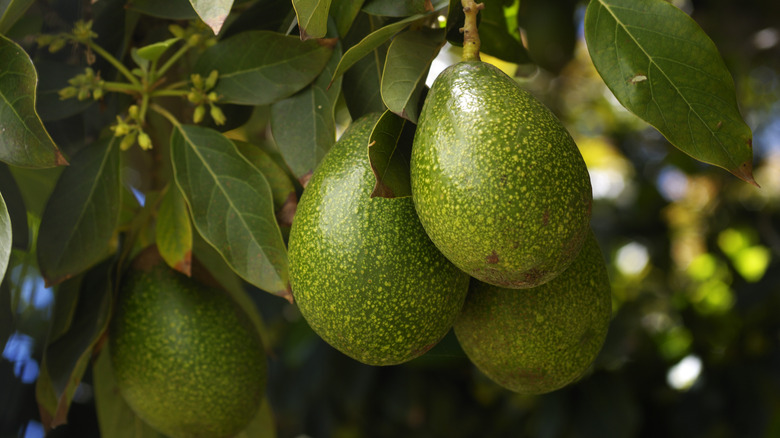How Can You Make Avocado Trees Produce More Fruit? Here's What Our Orchardist Says
Like many fruit trees, an avocado tree has its own unique growth cycle. Sometimes, different varieties of avocado trees have shorter or longer periods of ripening or produce fruit earlier or later in the season, which is often described in the accompanying information when you purchase your tree. There are no clever "tricks" to increasing your avocado crop, but if you practice good care techniques, you can improve your avocado tree's health and ensure optimal fruit yields and productivity.
Avocado trees produce fruit once a year. As with other types of fruit trees, the amount of fruit produced may vary from one year to the next, sometimes depending on weather. How you care for your avocado tree will vary slightly depending on the variety. Most avocado trees grow to at least 30 feet tall or more and need plenty of space for their deep roots. However, dwarf, cold-hardy avocado trees are now available, and they can be grown in patio containers or even moved indoors for the winter.
Avocado trees are self-fertile, so you don't need a second tree for pollination. However, a second tree of a different variety will often improve fruit production. If you grow your dwarf avocado in a container, ensure it's on wheels so you can move it outside from mid-spring through late summer. I've observed that pollinators are just as happy to visit patio fruit trees as orchard trees. Insects and wind will help increase pollination and improve the fruiting capacity of your avocado trees.
Optimal growing conditions
The main growing conditions to pay attention to for a fruiting avocado tree are temperature, sun, water, soil, and fertilizer. If you live in a zone where you can grow avocados outside, suitable temperatures are crucial for good fruit production. Many avocado varieties thrive best in USDA zones 8 to 11, but some cold hardy varieties can be grown in zones 4 to 11 with winter protection (ideally bringing containers inside for the winter).
Avocados love sun, so plant them in a southern exposure where they'll get at least six hours of direct sun. If grown in a container, rotate your container every three weeks for ample sun exposure. Container plants should be watered when the top 3 inches of soil is dry to the touch (water thoroughly once a week if it doesn't rain). Use a well-draining potting soil in the container or a soil mix made specifically for avocados, which usually contains coconut coir, a natural material that improves drainage and aeration to help prevent root rot.
If you're in a warm enough zone to grow avocados in the ground, your soil may be rich enough for your trees. But if you're in a desert climate or the soil is poor, you'll need to increase soil nutrition. Avocados do well with the same fertilizers used for citrus trees, which contain added nitrogen and zinc. I also find it easy to improve store-bought potting soil with organic amendments such as compost, fish emulsion, and coffee grounds.
Tips for an optimum avocado harvest
So you've made sure your avocado tree is located in a sunny spot with well-draining soil, and also see that it has adequate water and fertilizer. What else can you do to help increase your avocado harvest? If your avocado tree is fairly new, it may not be mature enough yet to produce a lot of fruit. Even if you purchase a grafted tree with fruiting branches added, it may take a couple of years to reach a more vigorous level of fruit production, so be patient.
If growing your tree in a container and bringing it indoors for winter, make sure its winter spot is conducive to good health, including consistent temperature and humidity. Don't place your avocado tree near a drafty window or heat vent, as temperature changes may cause stress. Terracotta pots are perfect for avocado trees as they provide good temperature control. If the leaves seem dry from indoor heat, use a plant mister to hydrate them lightly.
Most avocado trees don't need pruning unless it's to remove dead or damaged branches. But if the growth gets thick, you may want to remove some smaller branches to improve sun exposure and airflow. Do this in early spring before the more active growth period. If your potted avocado plant seems to be outgrowing its container, repot it during the dormant season (late fall or winter) and replace the soil.


